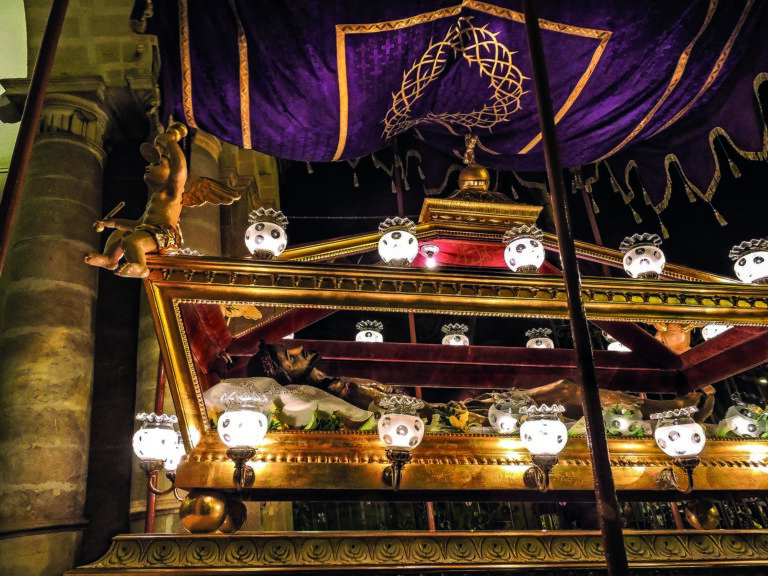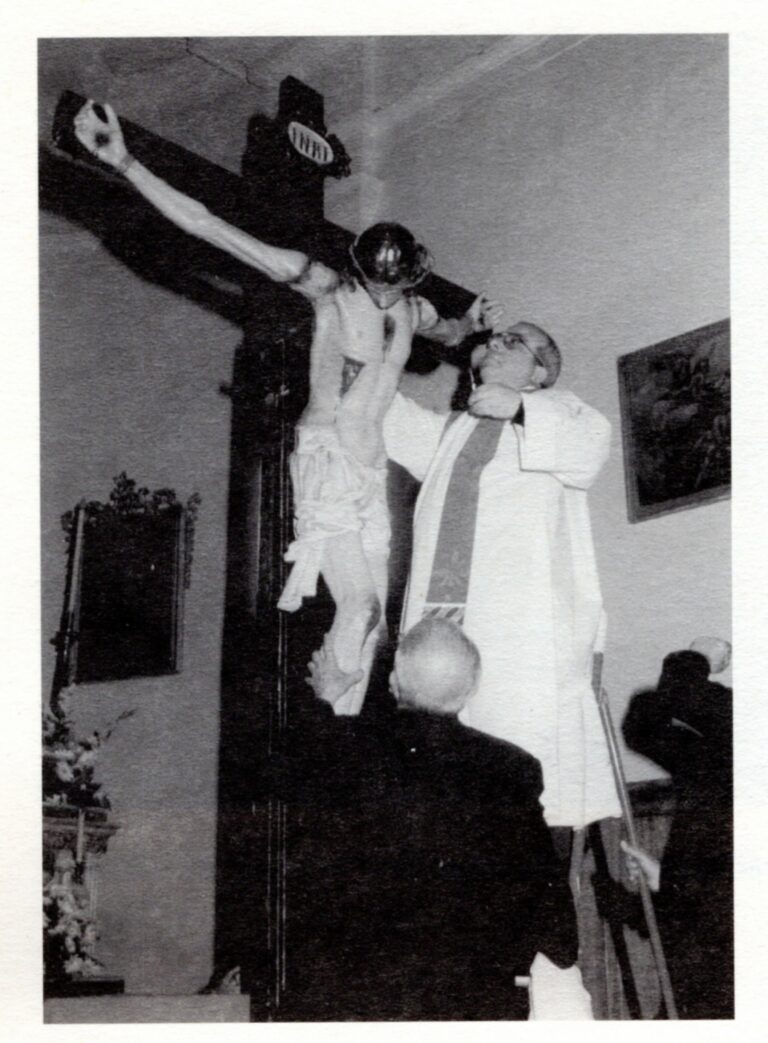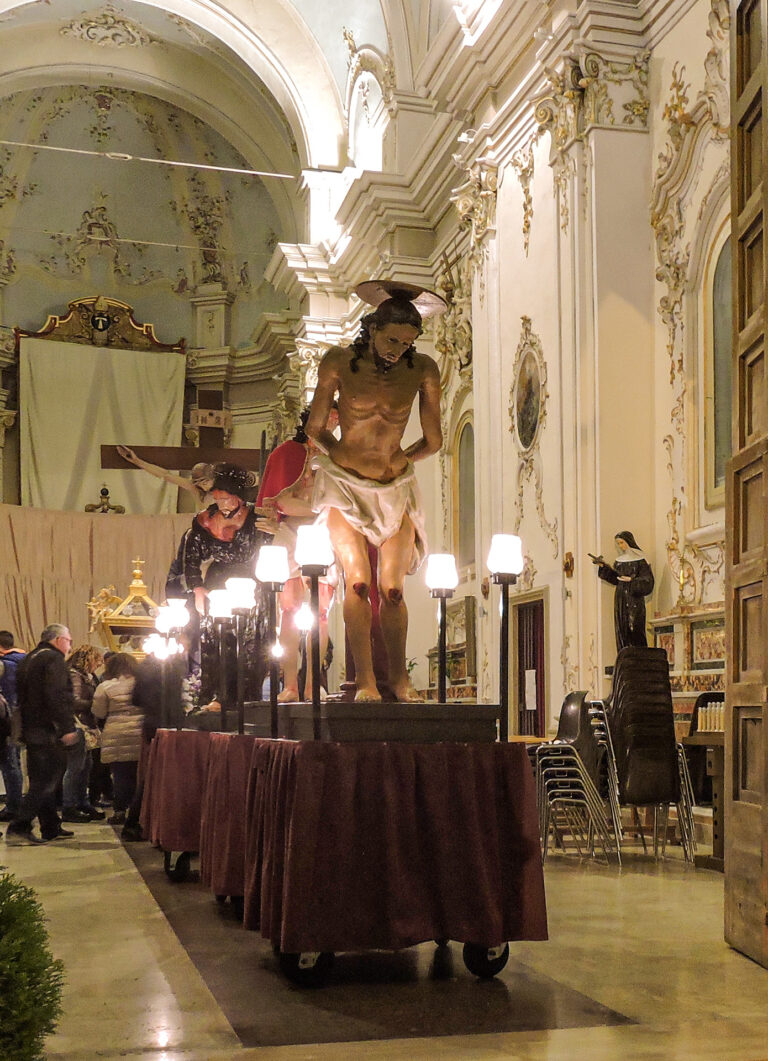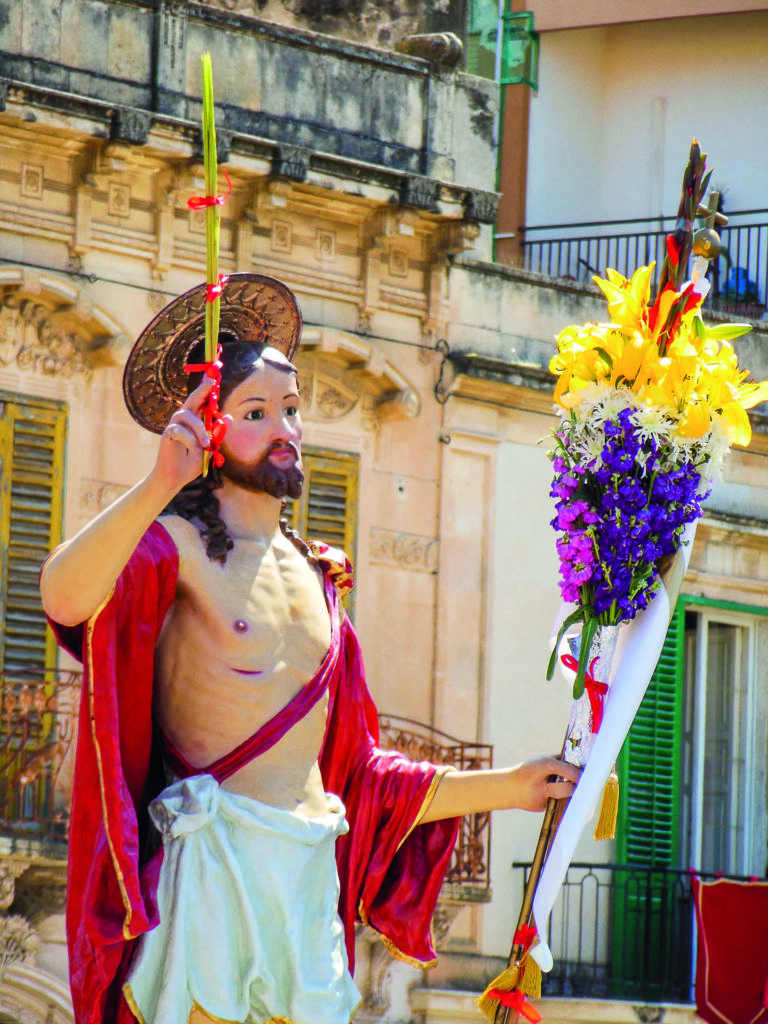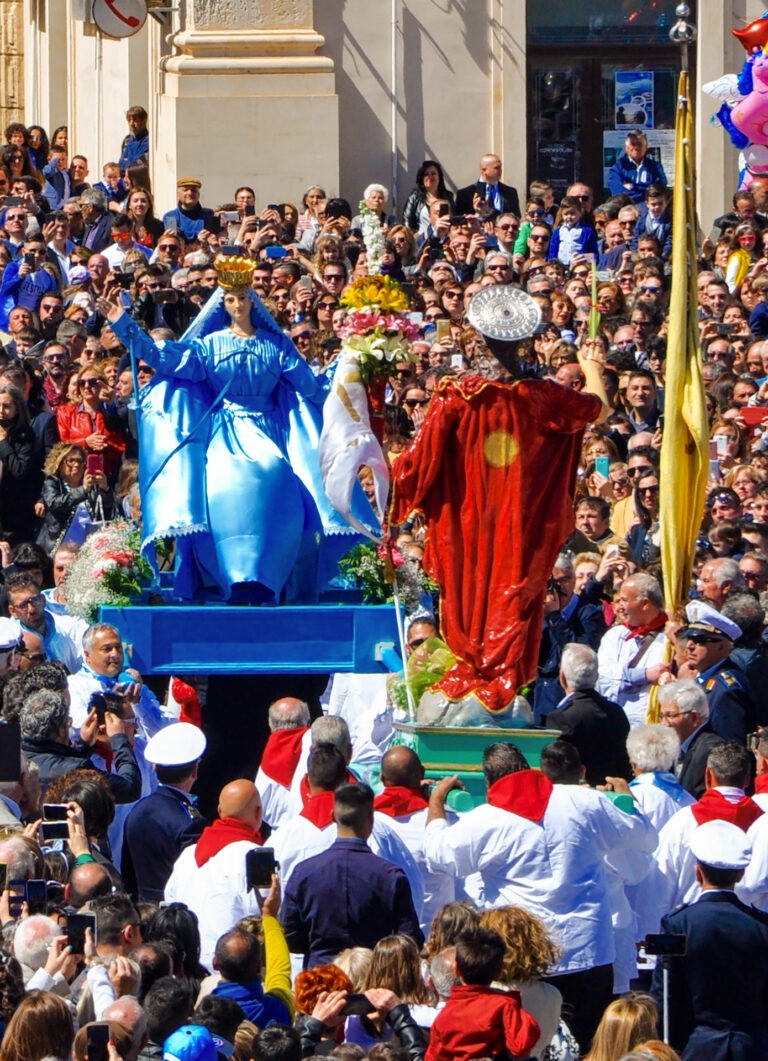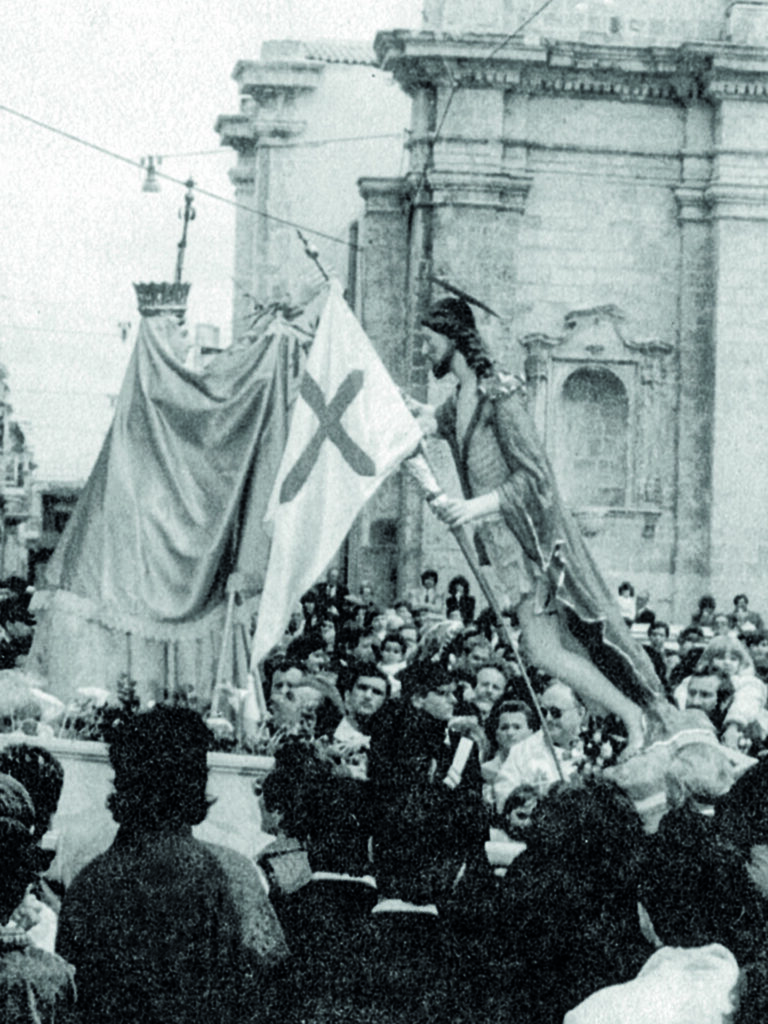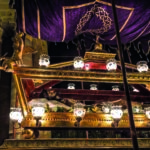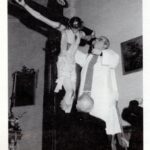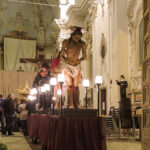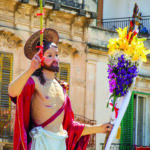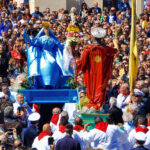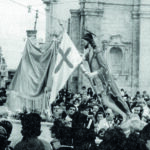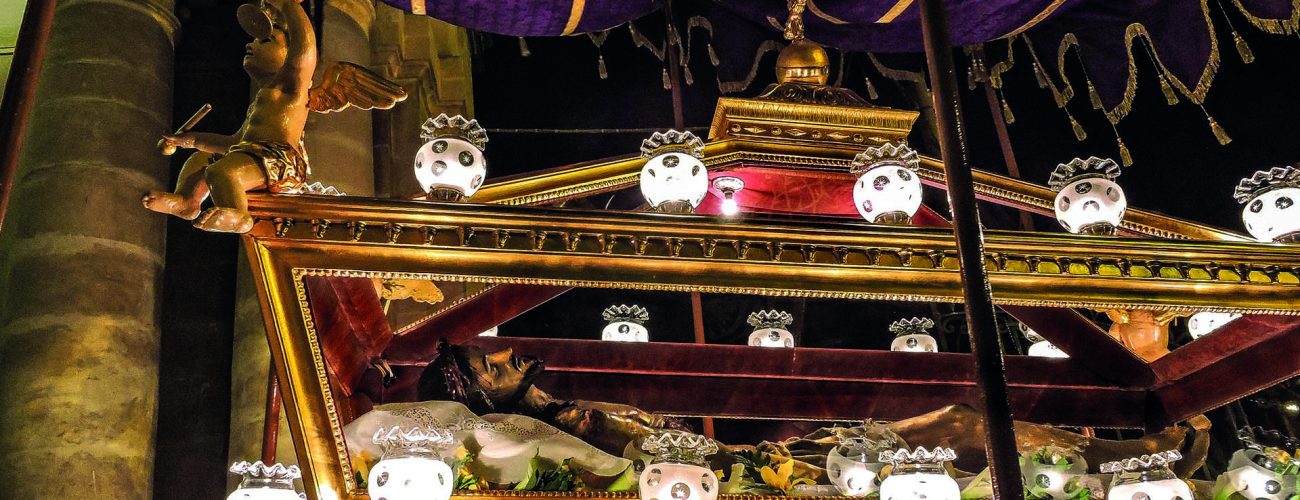
The Paschal time, from pain to joy
The entire Lent, a time of reflection and preparation for renewal, was and still is, even if in a smaller way, deeply felt by the community of Avola parishes. Detailed information on the various moments that mark this period and in particular the Holy Week is once again given by the historic Gubernale, furthermore other information is given by the scholar and botanist Giuseppe Bianca, the latter reports some notes on a seventeenth-century sacred representation near the church of Santa Venera in ancient Avola, the Casazza.
Holy Week begins with Palm Sunday, the Gubernale writes of a single ritual of blessing the palms which took place in the Mother Church, where especially the children went to have the palms and olive branches blessed; around 10 am, a function commemorating Christ’s entry into Jerusalem was held outside the church. The simple or intertwined palms, and the blessed twigs were preserved for the entire year, hanging above the bedsides of the bedrooms or placed on a tree located within one’s countryside. Starting from the 1980s, the custom of a single blessing was abandoned and each parish organized its own.
Gubernale still refers to a function, now disused, which was carried out on Holy Wednesday, the Tenebra; during the afternoon the priests recalled the earthquakes and the darkness that followed Jesus’ death on the cross, in fact the sacristan slowly extinguished the altar candles and the priests kneeling next to the stalls beat the seats.
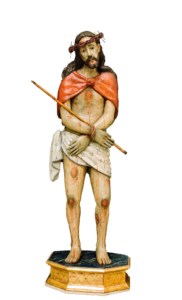
On Thursday, both in the past and in the present, all the altar cloths are folded and the tombs are prepared, that is, in every church, after the re-proposition of the washing of the feet and the Last Supper, the exposition of the Blessed Sacrament is set up, almost always in the main altar. Furthermore, candles, lamps, vases with flowers, small plates or trays with sprouted wheat seeds (lavuredda) are added to the altar. The bells do not ring from the early afternoon of Thursday until Saturday, in fact for the occasion the clappers are tied (the bells are attached).
In the afternoon hours of Good Friday, respecting tradition, the “seven words” are celebrated at the Mother Church, that is, a reading of seven passages from the Gospels containing the last sentences pronounced by the dying Christ; after each reading a sermon follows. The function ends with the procession of the lifeless body of Christ, from the Mother Church to the church of Sant’Antonio Abate. Here the “monument” and the statues (the ‘misteries) of the Holy Thorn are prepared. In the evening the procession solemnly leaves the aforementioned church and proceeds, preceded by a parish priest who carries the reliquary containing the holy thorn from Christ’s crown, through the streets of the historic centre.
On Saturday afternoon, preparations begin for the statue of the Madonna, which will be used the following day in the encounter with the risen Christ. The statue, owned by the Lutri family, is kept in the palace located in via Mazzini, and for the occasion it is dressed and covered with a black cloak, subsequently the statue is brought, accompanied by the prayers of the faithful, to the church of Sant ‘Anthony of Padua.
According to the Gubernale, this procession was anciently carried out by a large number of boys carrying torches, made with dry reeds bundled up and lit, the ciaccari addumati.
In Avola, the community celebrates the Resurrection at 12pm on Sunday, when the statues of the risen Christ and the Madonna, respectively coming from the church of San Giovanni Battista and the church of Sant’Antonio da Padova, meet in Piazza Umberto I. This moment is called a paci: after three waves of the flag the Madonna reveals her face, freeing herself from the black cloak and joyfully proceeds towards her Son; at this point the crowd explodes in screams of joy and thunderous applause. The statues, before being brought back to the Mother Church, repeat the meeting in other points of the historic centre.
